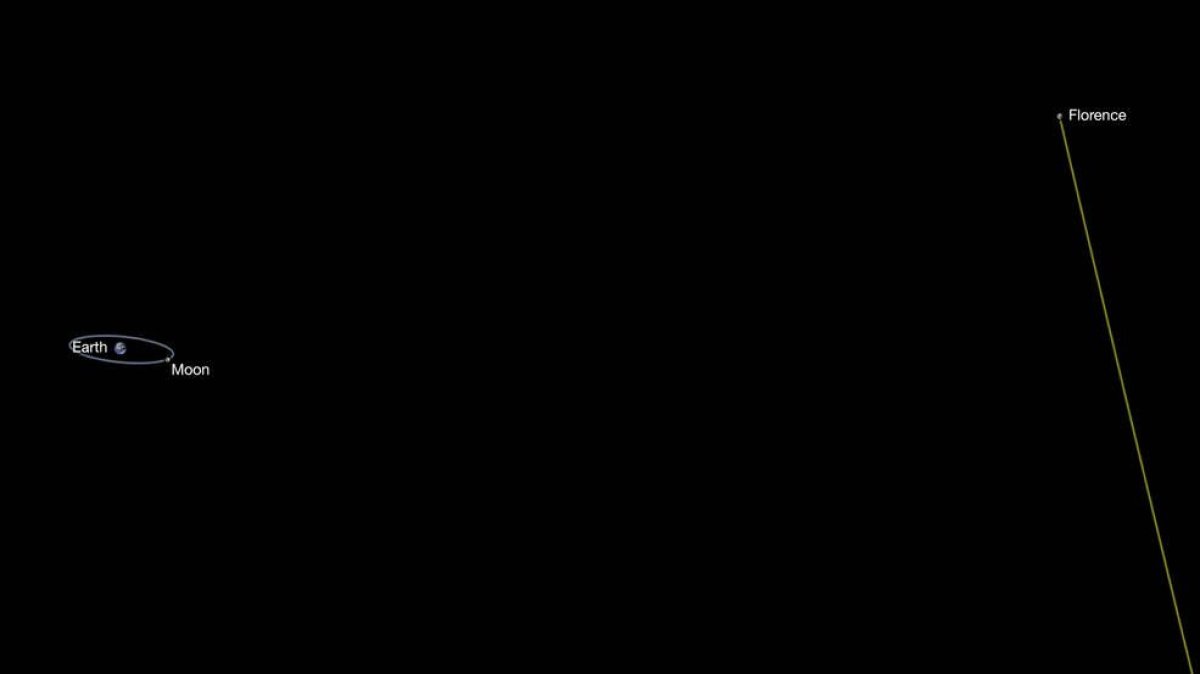
An astroid due to pass Earth at a distance of 145 million miles on 1 September will be the biggest to do so since records began. It is the closest that the 2.7 mile wide asteroid, named Florence, will have come to Earth since 1890—and it will not come this near again until 2500.
"While many known asteroids have passed by closer to Earth than Florence will ... all of those were estimated to be smaller," Paul Chodas, manager of NASA's Center for Near-Earth Object Studies, said in a statement.
"Florence is the largest asteroid to pass by our planet this close since the NASA program to detect and track near-Earth asteroids began."
Florence, named after Florence Nightingale, was discovered by U.S. astronomer Schelte 'Bobby' Bus in 1981 while he was working at the Siding Spring Observatory in Australia. It is classified by the International Astronomical Union's Minor Planet Center as a "potentially hazardous" asteroid, although it poses no risk to Earth.

NASA will be tracking the asteroid during the flyby and until September 8. Astronomers will use the Goldstone Solar System Radar in California and the National Science Foundation's Arecibo Observatory in Puerto Rico to study the asteroid. They hope to get surface details up to around 30 feet and an accurate size.
They should also find out if Florence is part of a binary system, with a companion asteroid flying alongside it. NASA said that if this is the case, the chances of detecting it are "excellent."

Amateur astronomers will be able to view the asteroid, Kelly Beatty, a senior editor at Sky & Telescope magazine, said. "Despite some interference from moonlight, 3122 Florence should be fairly easy to spot in even modest backyard telescopes," she said in a statement.
The asteroid will reach peak brightness on the night of August 31 and September 1, but it should be visible in the days before and after. The magazine has created charts for stargazers to map the position. During the flyby, Florence will travel south to north, passing through Capricornus, Aquarius, Delphinus, Vulpecula, and Cygnus.

"An especially good opportunity occurs at about 8pm Eastern Daylight Time on Saturday evening, September 2, when the asteroid crosses the quartet of 4th-magnitude stars that mark the head of Delphinus, the Dolphin," the statement said. "It will be gliding northward by a little less than the full Moon's diameter each hour, motion that should be obvious by watching the asteroid's starlike pinpoint through a telescope for just a few minutes."
Uncommon Knowledge
Newsweek is committed to challenging conventional wisdom and finding connections in the search for common ground.
Newsweek is committed to challenging conventional wisdom and finding connections in the search for common ground.
About the writer
Hannah Osborne is Nesweek's Science Editor, based in London, UK. Hannah joined Newsweek in 2017 from IBTimes UK. She is ... Read more
To read how Newsweek uses AI as a newsroom tool, Click here.








